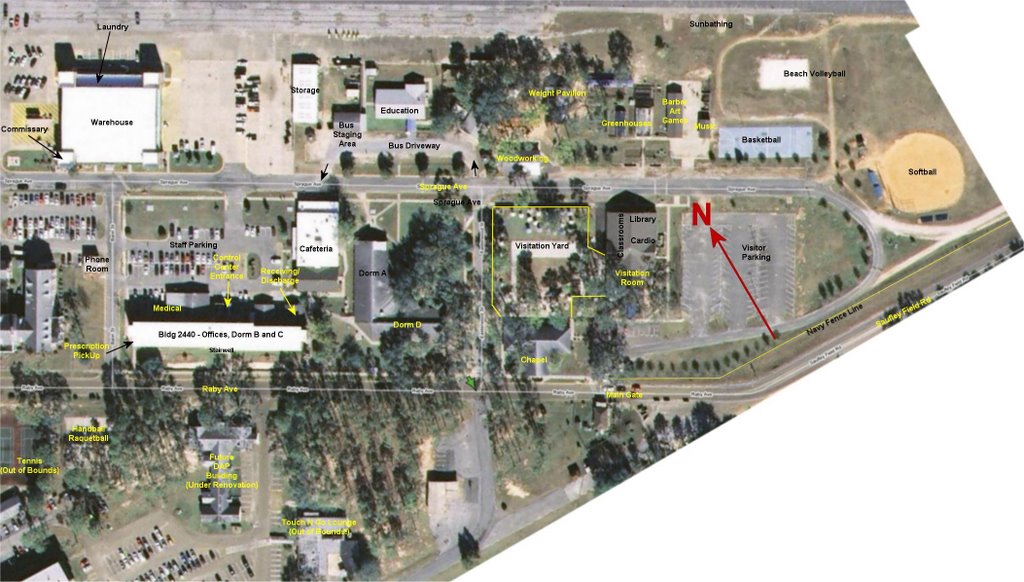The CURE: America's Ailing Federal Criminal Justice System
FedCURE is the world's leading advocate for America's, ever growing, federal inmate population which is approaching 200,000 people. We are working with members of Congress to reinstate parole; increase good time allowances; provide for compassionate releases; restore PELL grants; and opportunities for successful reentry into the community, for all federal offenders; and promote a system that incarcerates fewer people and provides humane conditions for those who are incarcerated or under post-incarceration supervision via parole or supervised release. Over 45,000 people were released from federal prison last year.
FedCURE's lifetime member and PBS film producer and Soros Justice Media Fellowship candidate, Allan Mason and BNNreports.com (Broadcast News Network), are documenting FedCURE's activities for inclusion in the production of a one-hour special news documentary film titled, The CURE: America's Ailing Federal Criminal Justice System (suitable for Frontline, NOW, or an independent special report for the Public Broadcasting System and their affiliates).
The film would examine the ailing federal criminal justice system in the United States and the impact of two pieces of proposed federal legislation that would reduce federal prisons sentences and provide for tax payer relief by enacting smart legislation that would revive the system of parole for federal prisoners; and reduce run-a-way recidivism rates by enacting smart legislation such as "The Second Chance Act," reauthorizing the grant program of the Department of Justice for re-entry of offenders into the community, to establish a task force on Federal programs and activities relating to the re-entry of offenders into the community, and for other purposes. See links below, H.R. 3072, H.R. 1593 and S. 1060, respectively. We are seeking partners and funding for this film and to produce short VNR's for our upcoming legislative campaigns to promote FedCURE's legislative initiatives.
FedCURE co-authored the last two federal parole bills in the 108th and 109th Congress with Rep. Danny Davis (D-ILL). This year FedCURE drafted a new federal parole bill for Rep. Davis and to float around to other members of Congress who may want introduce the bill in this Congress. The bill is titled as The Criminal Justice Tax Relief Act of 2007 (CJTRA). The bill is estimated to save the taxpayers 4 to 7 billion dollars annually and 80 to 140 billion dollars over a twenty-year period.
The CJTRA, would, inter alia:
- Reinstate the old parole statutes and make amendments thereto.
- Make all offenders eligible for parole.
- Increase good time allowances.
- Give jurisdiction to the United States Parole Commission to set release dates in accordance with applicable parole guidelines or the U.S. Sentencing Guidelines, whichever is lowest.
- Provide for reduction in term of imprisonment of elderly offenders.
- Clarify parole procedures.
- Provide post incarceration supervision.
- Apply prospectively and retroactively.
- Extend the life of the United States Parole Commission for twenty years.
The Second Chance Act of 2007 authorizes $192 million annually and would:
Reauthorizes and makes improvements to existing State and local government offender reentry program. The bill authorizes $50 million annually for the Department of Justice, State and local grant program, increasing authorization levels, incorporating best practices from the reentry field, and requiring the measuring and reporting of performance outcomes.
Authorizes new competitive grants for innovative programs to reduce recidivism. The bill authorizes $130 million each year in grants for State and local governments and public and private entities to develop and implement comprehensive substance abuse treatment programs, academic and vocational education programs, and housing and job counseling programs, and mentoring for offenders who are approaching release and who have been released. The bill requires grantees to establish performance goals and benchmarks and report performance outcomes to Congress.
Strengthens the Bureau of Prisons ability to provide reentry services to federal prisoners. The bill authorizes funds to improve federal offender reentry services and to establish an elderly non-violent offender pilot program.
Authorizes grants for research and best practices. The bill authorizes additional funds for research on innovative drug treatment methods, causes of recidivism, and methods to improve education and vocational training during incarceration and for the development of best practices.
If you are an interested party, please do not hesitate to contact us.
Mark A. Varca, J.D., CIO
FedCURE
P.O. Box 15667
Plantation, Florida 33318-5667
USA
Web Site: http://www.fedcure.org/
E-mail: FedCURE@FedCURE.org
E-fax: (408) 549-8935
Links to Bills:
H.R. 3072: http://www.fedcure.org/information/HR3072-IH-FullText-FedCURE.shtml
H.R. 1593: http://www.fedcure.org/information/HR1593.shtml
S. 1060: http://www.fedcure.org/information/S.1060.shtml
BNN: http://www.bnnreports.com/fedcure
"Using Technology to Bring About Federal Criminal Justice Reform" ™
Please Donate and Join Now: http://www.fedcure.org/join.shtml
Subscribe to our free discussion group e-mail:
FedCURE-org-subscribe@yahoogroups.com
WWW.FEDCURE.ORG All rights reserved (2007)




2 comments:
Bill,
I think this blog really solidifies that the federal government seems to be a bit out of control when it comes to sentencing. I have no doubt in my mind that there are many people who are actually innocent, and many others who got ridiculous sentences for non-violent offenses. And it's really sad to read about. Your blog has linked me to a few websites with prison stories and I'm shocked to find out how long these sentences are for stupid mistakes. There doesn't seem to be much concern for any type of rehabilitation. Granted I want the rapists and the murderers and the wife beaters in jail for a long long time but I'm willing to give others a few chances.
My heart always gets a little heavy when I hear of anyone who is probably a really good person overall but made a few mistakes receiving a long jail sentence. Granted, the rule of law must be upheld but it seems some federal prosecutors like to hang their hat up every night and smile because they've sent someone to jail for a long time.
I think Jim Black is a good example locally. Granted he did some really dumb things and deserved to be punished but it's sad that the person then becomes only known as a felon and someone that has to spend a lot of time in jail for a few dumb mistakes. Then their are others like Bernard Ebbers former CEO of WorldCom who did a lot of great things for a lot of people and then made some dumb business decisions. But all that seems to be ignored and many individuals seem to get excited that these people get long prison sentences.
Anyway, thanks for the FedCure link. I will definitely check it out.
Can I ask how you ended up with 3 months when you struck a deal with the prosecutor for 15-21 months?
Was there ever a fear of being taken to jail immediately or did you know you would be able to self report?
The plea deal was for 12 points (10-16 months) with 2 sentencing enhancement issues argued before the judge that could have got me to 15-21 months. We won both arguments (had we only won 1, I would have been looking at 13 points... 12-18 months) and the judge decided to depart slightly below the minimum guideline sentence and give me 6 months. Sentences in the 11-12 point range (Zone C, I believe) can be "split" - half in prison, half home confinement. I did the 3 months in prison, now I'm one week into my 3 months home confinement, which I wrote about last week.
Post a Comment